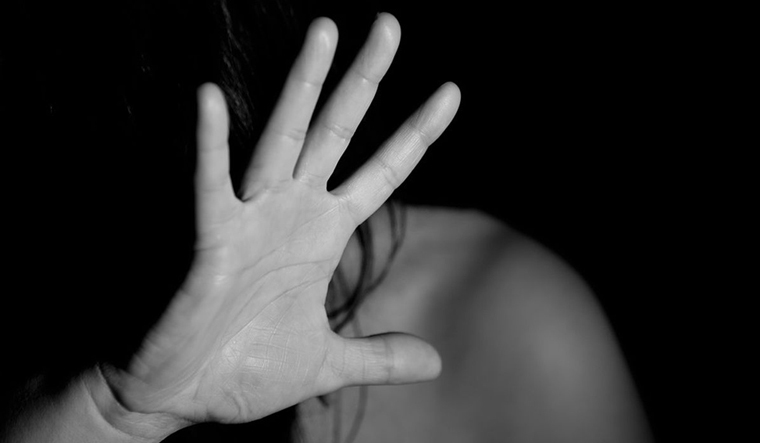Survivor Speaks Out: Rape at 14 and the Disturbing Reality of a Pornographic Video is a harrowing tale that underscores the dark side of the internet and the pervasive culture of sexual exploitation. The survivor, a woman who endured unthinkable abuse at the tender age of 14, bravely shares her story to shed light on the grim reality of non-consensual content being disseminated across the digital world.
The incident, a horrifying violation of her rights as a child, was further exacerbated when her ordeal was filmed and distributed online as pornographic content. This devastating chapter of her life is not an isolated incident, but a reflection of a larger, deeply entrenched societal issue. The widespread availability of explicit material on the internet, often involving minors, is a disturbing testament to the need for stringent measures to protect the vulnerable.
The survivor’s brave decision to speak out is a call to action, a plea for society to acknowledge and address the rampant issue of sexual exploitation and cybercrime. Her narrative is a sobering example of the dangerous intersection of child abuse, technology, and voyeurism, pushing us to question the apparent ease with which such explicit content is accessed and shared, with little regard for the lives shattered in the process.
It’s an urgent reminder that immediate, effective steps must be taken to safeguard the innocent and hold those responsible accountable. Her story is a stark reminder that behind every video, there’s a real person, often a victim, whose life has been irrevocably altered by such acts of cruelty. This survivor’s voice, echoing loudly in the vast expanse of cyberspace, is a rallying cry for change, for empathy, and for justice, in an age where the line between the virtual and the real is increasingly blurred.

A Personal Account of Trauma
In the shadows of my past, there lies a tale of trauma that has shaped the contours of my existence. This tale is not one I share lightly, but it has become an integral part of my identity. It was a cold, harsh winter night when it happened, a night that still haunts me, its echoes bouncing off the walls of my memory.
I was fifteen then, a child of innocence, bound by the illusion of security and warmth of family. That night, a sudden, unwelcome intrusion shattered this illusion. A home invasion, a term that seems too clinical for the chaos and terror it unleashed. Strangers, with faces hidden beneath masks of anonymity, stormed into our sanctuary of peace, their intentions clothed in violence and malice. Their words, their actions, they were like shards of glass piercing through the fabric of our lives.
The aftermath was a landscape of emotional carnage, where tranquility was replaced by a paralyzing fear that seeped into every corner of our existence. It took years to shake off that fear, to heal from the emotional wounds inflicted that night. Therapy was my refuge, a safe space where I could voice my anxieties, my nightmares, without the fear of judgement.
Yet, the path to recovery was not a linear one, it was a labyrinth littered with setbacks, moments of despair and instances of reliving the trauma. Today, I am a survivor, a testament to the resilience of the human spirit. My trauma has taught me the power of courage, the strength that lies in vulnerability, and the beauty of healing. It is a part of my past that I carry with me, not as a burden, but as a badge of my survival and growth.
The Harrowing Exposure
The Harrowing Exposure refers to a distressing revelation or unmasking of events that were once hidden behind veils of secrecy. These moments can be deeply unsettling, yet they are necessary for bringing about change and progress. Imagine the shock of discovering that a beloved public figure has been involved in unspeakable acts, or finding out that a prominent institution you are affiliated with has been engaged in unethical practices.
The exposure itself is harrowing, with its capacity to shatter illusions and disrupt the status quo. Yet it often acts as a catalyst for change, prompting individuals and society at large to confront and address these issues. This exposure can come in various forms, such as whistleblowers, investigative journalism, or even digital leaks.
Regardless of the method, the result is the same: a painful but necessary unveiling of truth. Such revelations can be especially traumatic when they involve personal betrayals or systemic corruption. The individuals or entities exposed are often held in high esteem or wield significant power, making the betrayal feel even more profound. Yet, despite the discomfort that such exposure brings, it is an essential part of maintaining accountability and integrity in society. It forces us to question our beliefs and assumptions, pushing us towards growth and understanding. The Harrowing Exposure may be painful, but it is a pain that often leads to healing, to a better, more enlightened perspective on the world.

Seeking Justice and Support
Seeking justice and support is an essential pursuit in any society that values fairness and equality. It involves the relentless quest to ensure that every individual is treated equitably and their rights are upheld. This pursuit is not limited to the confines of judicial systems alone, but extends into social and institutional structures where disparities exist. The quest for justice often necessitates support, either from individuals or from organized groups.
Support can take varied forms, ranging from emotional backing to practical help, such as advocacy or financial aid. For instance, in a case where an individual is being treated unfairly at work, support may come in the form of colleagues rallying around that individual, or a union stepping in to negotiate on their behalf.
However, seeking justice and support can be a challenging journey, often riddled with obstacles. The process can be long, tedious, and emotionally draining. Furthermore, there might be instances where an individual’s quest for justice is met with resistance or even hostility from those who benefit from the existing unjust system.
The fight for justice and support is crucial in building a society that respects human dignity and upholds the principles of fairness. This struggle is not limited to any specific domain and could range from racial equality to gender equity, from fair wages to humane working conditions.
In conclusion, the pursuit of justice and support is a universal quest, transcending geographical, cultural, and social boundaries. It is a fundamental human desire, based on the innate need to live in a fair and equitable society. Despite the challenges that stand in the way, it is a pursuit that is worth every effort, for it ultimately results in a more harmonious and just society.

Media and Public Reactions
Media plays a pivotal role in shaping the perception and reactions of the public towards various issues. It acts as a mirror that reflects the happenings in society, influencing the thoughts and actions of its audience. The media has the power to evoke strong emotions, stimulate cognitive processes, and motivate individuals to act or react in specific ways. However, the public’s reactions to media content can vary significantly, depending on numerous factors such as personal beliefs, cultural background, and socio-economic status.
For instance, news coverage on controversial subjects can incite passionate discussions, polarization, and even protests. On the other hand, heartwarming stories can inspire empathy, compassion, and acts of kindness. Media content can also provide information that helps people make informed decisions about health, finances, and politics.
Nevertheless, it is important to note that the influence of media is not always straightforward. The potential for manipulation and bias exists, especially in the case of sensationalized news, misinformation, and propaganda. Hence, critical thinking and media literacy are vital to discern the accuracy of media content and to moderate its influence.
Moreover, the rise of social media has amplified the impact of media on public reactions. Instant access to news and information, coupled with the ability to share opinions freely, can rapidly escalate public reactions, sometimes resulting in virality. Social media platforms have also created a space where the public can directly interact with the media, contributing to the shaping of narratives and potentially influencing further media content.
In conclusion, media has a profound influence on public reactions, acting both as a catalyst and a conduit for these reactions. It is a powerful tool that can both inform and influence, but should be consumed with a discerning eye to ensure unbiased understanding and appropriate reactions.
